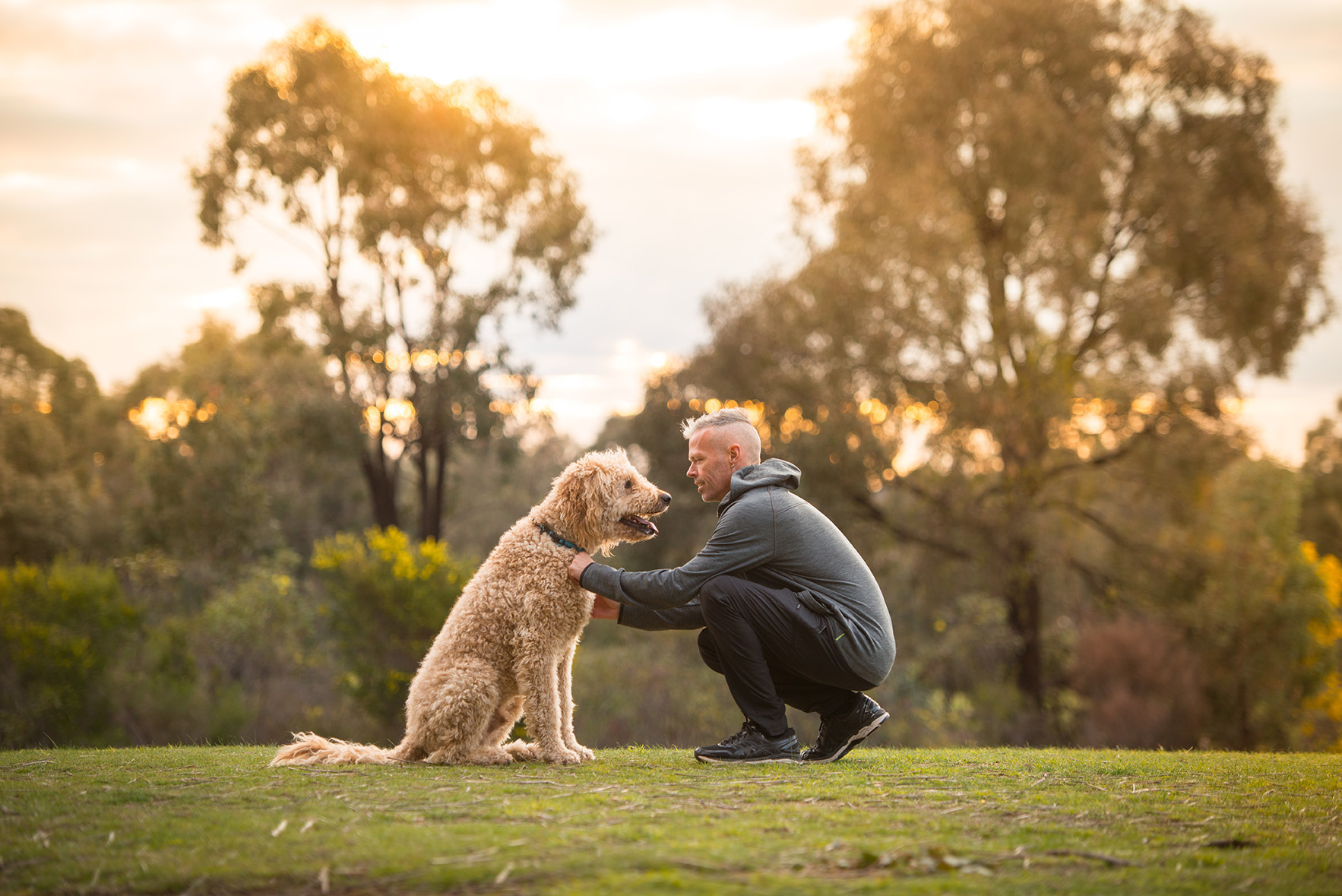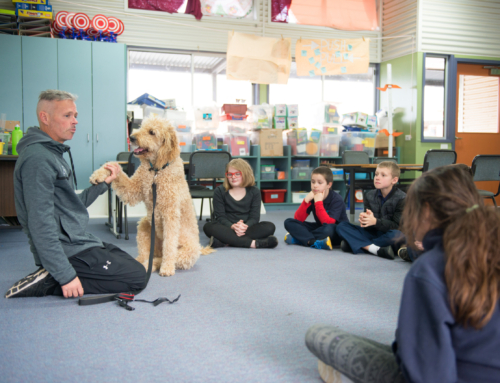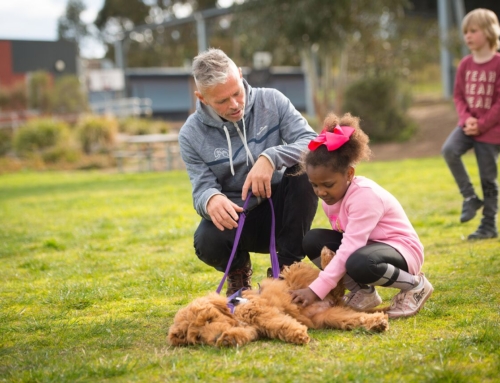Is MY dog an eligible candidate for being a wellbeing dog?
As the founder of the Dogs Connect Program in Australia and someone who is passionate about animal welfare and aligning with international standards for Animal Assisted Education, I often receive inquiries regarding the suitability of dogs as school wellbeing companions. Addressing this question requires a comprehensive understanding and consideration of various factors.
To begin, it is essential to grasp the fundamental philosophy behind Dogs Connect and how the program operates. By prioritising the education of humans over the training of dogs, we aim to cultivate a community-wide preparedness to ensure successful integration of dogs in schools. This entails not only being physically ready for a dog's arrival but also comprehending the individual dog's personality, needs, instinctual drives, and appropriate levels and types of stimulation.
When evaluating a dog's potential as a school wellbeing companion, it is important to explore their history and preferences. History extends beyond behavioural challenges or medical records; it involves understanding the dog's preferences, interests, and choices. Recognising each dog as a unique individual, learner, and sentient being forms the foundation for our program throughout the entire community, aligning with international standards in Animal Assisted Education.
From a broader perspective, since the emphasis of our program is on educating people rather than extensively training dogs, hypothetically, any dog could potentially fulfil the role of a school wellbeing dog. However, it is crucial to consider several general factors when assessing the suitability of a dog, including breed, temperament, appearance, coat, instinctual drives, reactivity, potential allergy triggers, individual personality traits, size, and other relevant characteristics.
When asked if a dog can be a school wellbeing dog, the response would generally be positive, albeit with certain caveats. We do not accredit dogs, nor do we believe that dogs need extensive training or an intense focus on specific outcomes. We also do not view dogs as being required to possess the same level of behavioural capabilities as assistance or seeing-eye dogs. However, it is of utmost importance for schools to genuinely embrace dogs as working partners and approach the preparation, planning, and implementation of this program authentically. Sustainable success for both dogs and communities hinges on consistent, mutually reciprocal interactions that afford dogs freedom of choice.

Failure to consider these factors often leads to dogs being subjected to excessive stimulation, interactions without sufficient choice, and inappropriate behaviour or reactivity, which is highly undesirable in a school setting. Many of the challenging behaviours encountered in schools can be traced back to deficiencies in the planning and execution of the program, including a lack of consistency and consideration for the dogs involved. It is common for schools to experience a significant impact from the connection with their school wellbeing dogs, potentially leading them to overextend their involvement with the dogs beyond what is sustainable or aligned with best practices.
Although we do not require dogs to undergo extensive training, certain behavioural expectations must be met. Dogs should exhibit appropriate behaviour, routines, and understandings, including basic behaviours such as sitting and relaxing independently in stimulating environments without the need for constant engagement. They should also be capable of occupying a designated space, such as a bed or mat, and engaging in self-stimulation or cognitive activities. Furthermore, dogs should be able to interact appropriately with individuals of all ages, encompassing play, gentle connection, patting, and walking on a leash without compromising their safety or that of the person handling them.
These outcomes may not be overly complex, but they must be consistently expected, integrated, taught, and practised. At Dogs Connect, we do not accredit dogs based on their behavioural achievements, nor do we promote the concept of dogs needing to be obedient and respond to commands. Instead, we focus on positive relationships with dogs, emphasising communication, understanding, and clear expectations.
However, we do accredit schools within our program, recognising their commitment to maintaining a minimum level of best practices concerning the wellbeing of the dogs involved. This accreditation is vital to us as the program provider, and our structured support assists schools in demonstrating competencies related to the dogs' wellbeing, sustainable practices, and connections to existing curriculum and wellbeing support within their specific communities.
Returning to the original question of whether a dog can be a school wellbeing dog, it is indeed possible for mature dogs to learn and fulfil this role. However, it is crucial for schools to dedicate careful consideration to the unique requirements of the dog and the program. Our program strives to educate people on how to make these considerations, what factors to assess, and how to integrate all relevant aspects into a thoughtful, thorough, and sustainable plan that generates meaningful positive outcomes for both dogs and the community.
It is important to recognise that wellbeing dogs differ from therapy dogs, assistance dogs, and seeing-eye dogs. They should not be viewed as pets, but rather as valuable community members and connections within the school environment. The emphasis lies in building sustainable connections, supported by scientific principles. Dogs themselves are not mere tools; it is the authentic connection they foster that becomes the tool for positive impact.
By adopting this perspective, we acknowledge the necessity of genuine, mutual, and reciprocal connections that are built over time. Schools must prioritise understanding dogs, interpreting their choices and communications, and avoiding excessive stress, overstimulation, or exposure to unfavourable energies. Dogs should feel at ease and secure within the predictable, loving, and consistent environment of a school, where humans are not feared but rather seen as opportunities for connection. When dogs feel relaxed, their intuition shines through during interactions and connections, creating the magical experiences within our program.
On the other hand, when dogs are unable to relax or lack a predictable and consistent environment, they may become overwhelmed, leading to challenging behaviours, reactivity, and nervousness. This is not only unsustainable but also inappropriate within a school setting.
Furthermore, building connections with multiple individuals from a young age and socialising dogs to expand their world gently are crucial aspects of working with dogs, whether they are family pets or dogs specifically acquired for the program. It is imperative for school wellbeing dogs to form connections with more than one person, and our program actively supports and encourages this practice.
In summary, by prioritising the well-being of the dogs, fostering authentic connections, and integrating the program responsibly, there is the potential for any dog to unlock the transformative power of a wellbeing dog. Through this approach, we can create inclusive, supportive, and enriching educational environments that benefit staff, students and the wellbeing dogs themselves.







